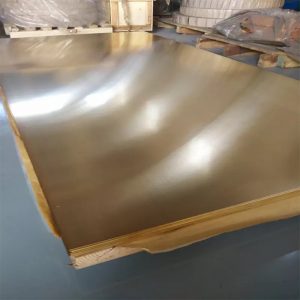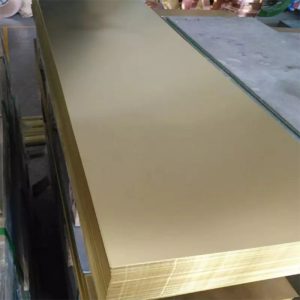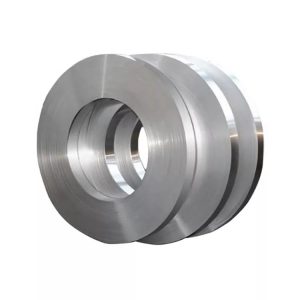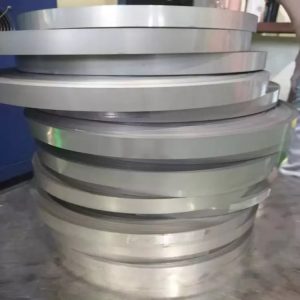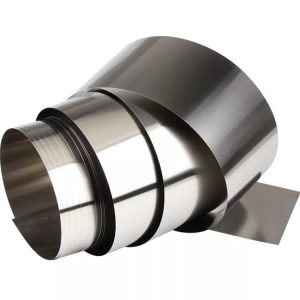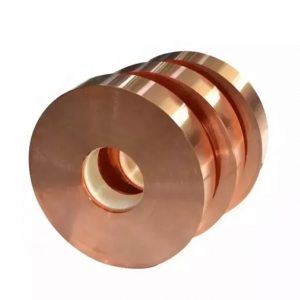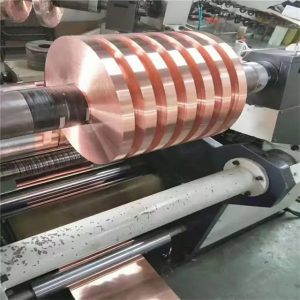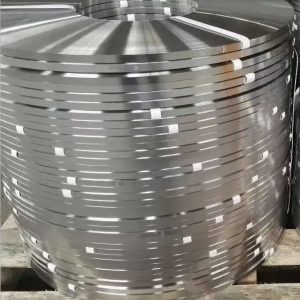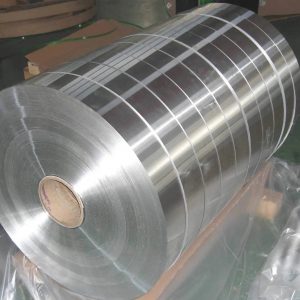Stainless Steel Strip is an austenitic chromium-nickel-manganese stainless steel that offers electromagnetic properties like electrical resistivity, magnetic permeability & electrical conductivity and Young’s Modulus of Elasticity. We offer these stainless steel strips in various material grades such as Stainless Steel 304 Strips, Stainless Steel 310 Strips, Stainless Steel 316 Strips, Stainless Steel 904 Strips and many more.
-
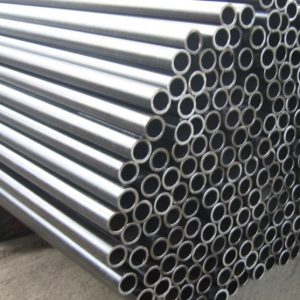 Lue LisääPikakatselu
Lue LisääPikakatseluEN10297-1 saumattomat teräsputket
-
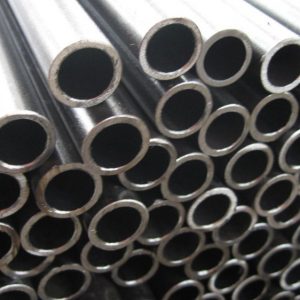 Lue LisääPikakatselu
Lue LisääPikakatseluEN10216-1/DIN1629 saumattomat teräsputket
-
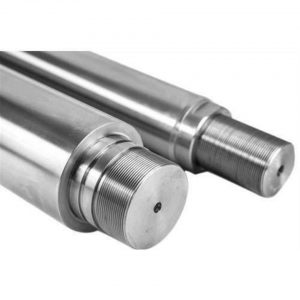
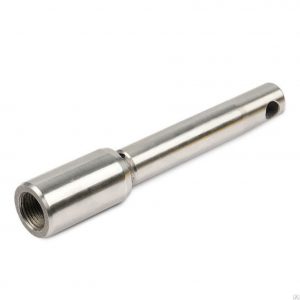 Lue LisääPikakatselu
Lue LisääPikakatselu4140 kova kromattu sauva
Teräs 4140 on AISI-standardiluokka, Se on eräänlainen seostettu rakenneteräs, vastaa Kiinan standardia GB 42CrMo.
SAE 4140 Seostetulla teräksellä on korkea väsymislujuus ja alhainen loviherkkyys, korkea iskusitkeys matalissa lämpötiloissa, ei ilmeistä temperamenttia haurautta, ja sitä käytetään pääasiassa sammutetussa ja karkaistussa tilassa. Sitä käytetään erittäin lujien osien ja osien, joilla on suuri poikkileikkaus, ja muiden jännitystä kantavien komponenttien valmistukseen iskukuormituksen alaisena. Kuten erittäin lujat hydraulisylinteritangot, PENAUMATIC-sylinteritangot, vaakasuoran taontakoneen voimansiirron epäkeskoakseli, taontapuristimen kampiakseli, jne.4140 Kromattu sauva valmistetaan SAE: n kautta 4140 teräspalkki, käyttämällä erittäin tarkkoja keskittämättömiä hionta- ja kiillotusmenetelmiä, ja sitten kromattu minuuttiin. Pinnoitteen paksuus 20 Mikronia (0.0008″), 25 Mikronia (0.001″), tai muu. Kromattu kerros tarjoaa korroosionkestävyyden ja erittäin heijastavan ulkonäön.
4140 Kromattuja tankoja käytetään laajalti hydrauliteollisuudessa ja pneumaattisessa teollisuudessa, ja sitä käytetään myös laajalti yleensä sovelluksissa, joissa vaaditaan korkeaa myötölujuutta ja vetolujuutta.
-
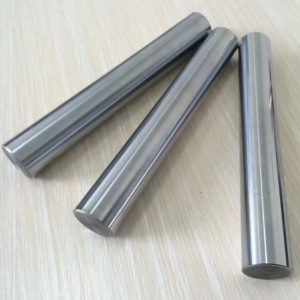
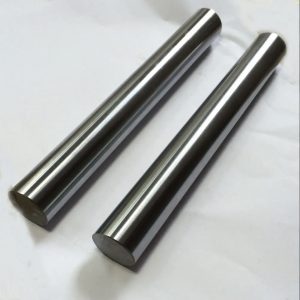 Lue LisääPikakatselu
Lue LisääPikakatseluCK45 kromattu palkki
-
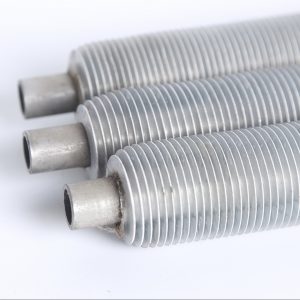
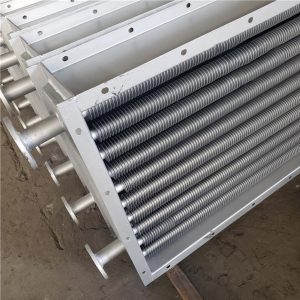 Lue LisääPikakatselu
Lue LisääPikakatseluAlumiininen eväputki
Alumiinievämateriaali sulkee putken kokonaan, paitsi päissä, joihin voidaan levittää putkipinnoite. Jos ilmakehässä esiintyy korroosiota ja kun sitä käytetään suunnittelulämpötilan rajoissa, Suulakepuristetut putket tarjoavat vakaimman suorituskyvyn ajan myötä verrattuna muihin evätyyppeihin. Evä rullataan ulommasta alumiiniputkesta prosessilla, jossa käytetään painetta valssatun "painesidoksen" muodostamiseksi vuorausputken ja evien välille.
-
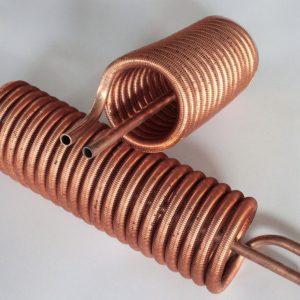
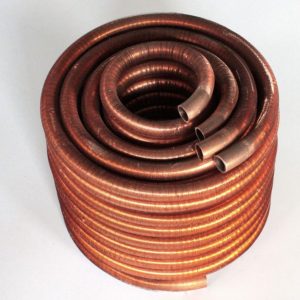 Lue LisääPikakatselu
Lue LisääPikakatseluCoiled Copper Fin Tube
Copper fin coils are also special coils that Grand provide. These coils don’t have a bi-metallic bond usually found on standard coils and have a copper wavy fin pattern bonded to the copper tubes.
These coils are very reliable heat exchangers as they are required and can operate for air conditioners in harsh coastal areas and other highly corrosive surroundings because the coils have higher coastal corrosion durability. The coils match this type of environment because the bi-metallic construction is not present, and copper has a natural protective film and a mono-metal bond attaching the tube and fin. They have superb thermal conductivity, resistance and strength compared to aluminium.
-
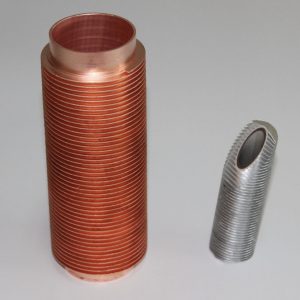
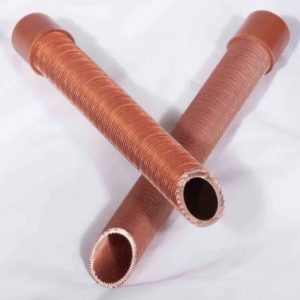 Lue LisääPikakatselu
Lue LisääPikakatseluCopper Fin Tube
Copper is a metal element, and pure copper is a soft metal. The surface is reddish orange with metallic luster when it is just cut open, and its simple substance is purple-red. Good ductility, high thermal conductivity and electrical conductivity, so it is the most commonly used material in cables and electrical and electronic components.
It can also be used as a building material and can be composed of many alloys. Copper alloys have excellent mechanical properties and low electrical resistivity. The most important ones are bronze and brass. Lisäksi, copper is also a durable metal that can be recycled multiple times without compromising its mechanical properties.
Copper pipes (also known as red copper pipes) are commonly used in tap water pipes, heating and cooling pipes, and can be used in different environments. Copper pipes combine the advantages of metal and non-metal pipes in cold and hot water systems. Copper pipes are resistant to high temperatures and can be used in a variety of environments. Compared with this, the shortcomings of many other pipe materials are obvious.
-
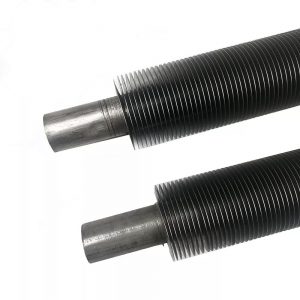
 Lue LisääPikakatselu
Lue LisääPikakatseluExtruded Fin Tube
Extruded fin tube is rolled as an integrity with no thermal contact resistance, high intensity, featured in thermal shock and mechanical shock resistance. Heat exchangers assembled with this kind of fin tube (extruded fin type) is much better than the one equipped with string fin tubes or hectically wound fin tubes (L/LL/KL type fin).
Extruded Finned Tubes, also known as “Integral Finned Tubes”. Integral finned tubes are manufactured by rolling process on tubes. During finning operation, the inside diameter of the tubes is reduced and helical fins are rolled on the tube wall. The tubes material can be Copper Alloy, Brass Alloys, Copper Nickel Alloy, Titanium Alloy, Stainless Steel, Duplex Stainless Steel etc. The pressure required to extrude fins from the aluminum sleeve creates an excellent “pressure bond” between the two materials.
Copper and aluminum com-posited fin tubes are rolled from a muff copper tube, advantaged in tight link, small thermal resistance, good heat transfer efficiency, small flow loss and strong corrosion resistance. When working in long time under heating and cooling conditions, they are durable and not easy to deform.
The integral extruded fin tubes is smooth on surface and easy to clean. When wet cooling in heating and air conditioning project, it is easy to remove the condensation water on the outer surface of the fin, and it is not easy to dust and scale in the heating and other heat exchange.
-
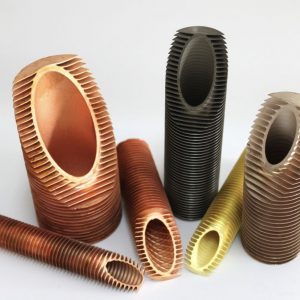
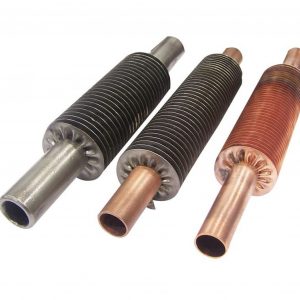 Lue LisääPikakatselu
Lue LisääPikakatseluExtruded Copper Fin Tube
Copper is a metal element, and pure copper is a soft metal. The surface is reddish orange with metallic luster when it is just cut open, and its simple substance is purple-red. Good ductility, high thermal conductivity and electrical conductivity, so it is the most commonly used material in cables and electrical and electronic components.
It can also be used as a building material and can be composed of many alloys. Copper alloys have excellent mechanical properties and low electrical resistivity. The most important ones are bronze and brass. Lisäksi, copper is also a durable metal that can be recycled multiple times without compromising its mechanical properties.
-
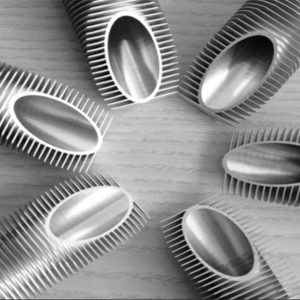
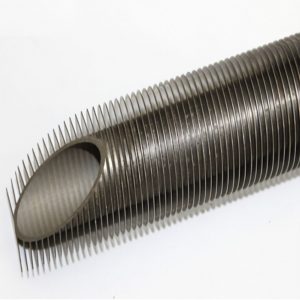 Lue LisääPikakatselu
Lue LisääPikakatseluTitanium Fin Tube
Seamless and welded titanium tubes are widely used in a variety of heat exchanger applications worldwide. These applications cover many industries such as steam turbine power plant, refineries, chemical plants, air conditioning systems, multi-stage flash distillation, desalination and vapor compression plants, offshore platforms, surface ships and submarines, as well as swimming pool heating systems.
-
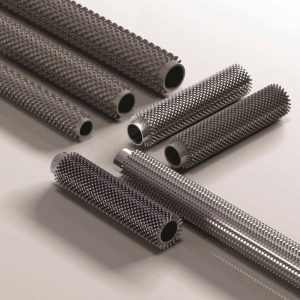
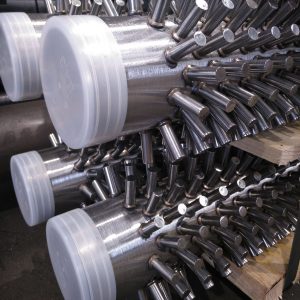 Lue LisääPikakatselu
Lue LisääPikakatseluStud Fin Tube
The STUDDED Fin Tube is manufactured by Resistance Welding of Studs on the Bare tubes.
The fins are manufactured by welding of the Fin Material which is essential a stud or rod welded at base to the tube by Electrical Resistance Process.
The current is made to flow through the Tube and the base of the studs. The studs are specifically made in shapes to facilitate the welding process. The Stud; during the finning “welding” process is also mechanically pressed on the tube at the point of welding thence causing a very good mechanical bond. This type of Fin Tube find very good application in high pressure and high temperature applications. The mechanical bond is very strong and hence finds application in places where extreme mechanical load, stress is expected while during the process or cleaning etc.
These Fin Tubes find application in Finned Pipes, Air Coolers, Heat Exchangers etc and are preferred in Industries like Petrochemical Refineries, Power Plants, Chemical Industries, Terästehtaat, jne.
-
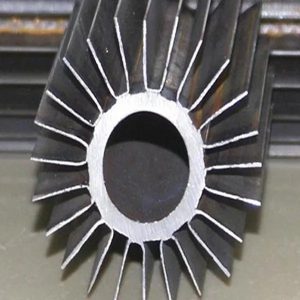
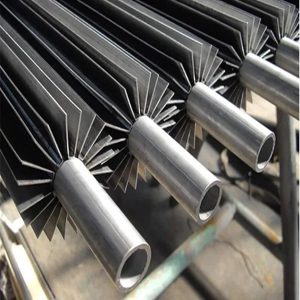 Lue LisääPikakatselu
Lue LisääPikakatseluLongitudinal Finned Tubes
Longitudinal finned tubes are produced by welding the fins with resistance along the length of the tube. The fins first form a u-shaped channel, allowing each of the u-shaped legs to form a fin. The channel is cut to the appropriate length and then welded into place along the length of the tube and resistance. The channels are a pair of welded, polar opposites, so the number of fins specified must be a multiple of four.
For a given tube or tube size, the desired heat transfer surface area per tube unit length can be obtained by specifying the appropriate fin height and number of fins. The maximum number of fins depends on the outer diameter of the tube – the larger OD tube can accommodate more fins.
-
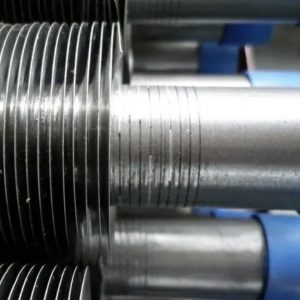
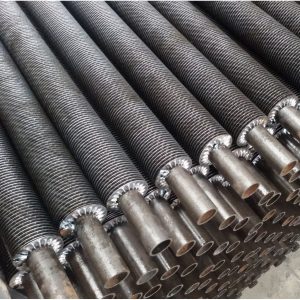 Lue LisääPikakatselu
Lue LisääPikakatseluLaser Fin Tube
Laser welding finned tube is a new, wear-resistant and efficient heat exchange material in the fin tube welding industry. It is a high-efficiency and energy-saving heat exchange element with high heat exchange efficiency, large heat dissipation area, long service life and temperature adaptation It has a wide range, high pressure, and conforms to the national energy conservation and environmental protection emission standards. It is widely used in waste heat recovery, petrochemical industry, power station boilers, economizers, passenger cars, industrial and civil building heating, refrigeration systems and other industries.
The laser welding fin tube is a fin tube laser welding machine that integrates laser technology, hardware molds, and numerical control automatic control. It is simple to operate and flexible and convenient to manufacture. Overcoming a series of problems in the welding process of laser welding finned tubes, such as fracture, slow speed, poor forming, and wrinkling. Datang has now successfully mastered the welding of finned tubes such as laser welding finned tubes and heat exchangers. The production and coordination of all parameters and automatic fixtures.
-

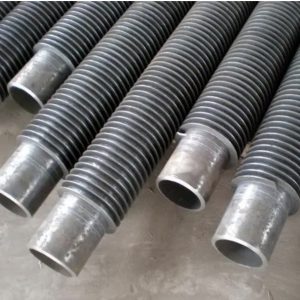 Lue LisääPikakatselu
Lue LisääPikakatseluSeamless Fin Tube
A fin tube is a tube that has small fins around the outside surface.
These fins act as a filter and a mechanism to transfer heat from the material inside the tube to the outside space or vice versa. Fin tubes are used in applications that require a transfer of heat from a hot fluid to a colder fluid through the tube’s wall.
Grand provide a wide range of fin tubes(carbon, stainless,copper,aluminium,titaani,jne;) are used in heat exchangers (ilma, water and chemically cooled)for various industries such as petroleum, petrochemical, teräs, power generation and many more.
-
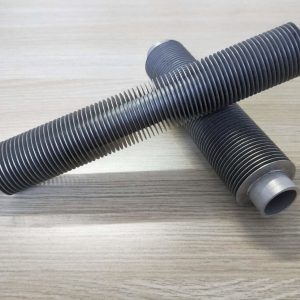
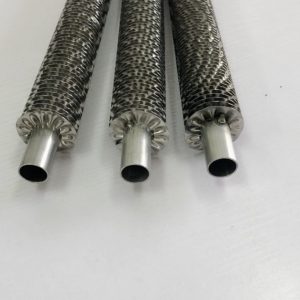 Lue LisääPikakatselu
Lue LisääPikakatseluStainless Fin Tube
Stainless steel fin tubes are processed out of various grades of both seamless and welded plain tubes. Plain stainless steel tubes will be procured from well known indian plain tube manufacturers, as per material specification and customer requirement, for processing fin tubes. Plain stainless steel tubes will be procured for finning, duly hydro tested and eddy current tested as per material specification and code, from plain tube manufacturers only, as per customer requirement. If customer require, we will procure plain stainless steel tubes, duly inspected, approved and released by customer or third party inspection agency, at plain tubes manufacturer’s end.
-
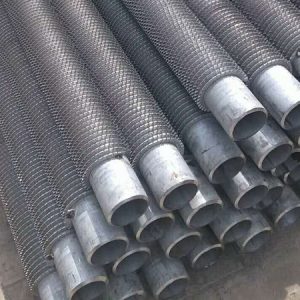
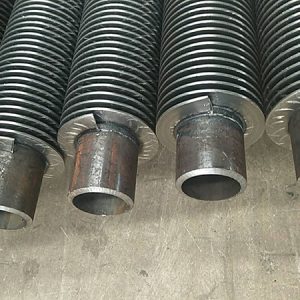 Lue LisääPikakatselu
Lue LisääPikakatseluHigh Frequency Welded(HFW) Fin Tube
High frequency welded finned tube is a type of finned tube, which is mainly welded by high frequency welding and is a new type of excellent heat dissipation element. The high frequency welding finned tube is welded with high frequency current, the welding method is reliable and excellent, the welding seam is small, and the surface of the radiator is more solid as well as beautiful.
High frequency welded finned tube is a heat sink element often used in finned tube radiators. Welding high-frequency welded finned tube on the base tube of the radiator improves the heat transfer coefficient of the heat exchanger side of the radiator and enhances the heat dissipation effect of the radiator, and the excellent heat dissipation effect makes the finned tube more and more popular.
The high frequency welding finned tube is welded with high frequency current, which can increase the compactness of the radiator and improve the safety of the high frequency welding finned tube radiator in the operation process. The high-frequency welding process is an improved and upgraded process on the basic welding process, which is also a more excellent welding process.
-
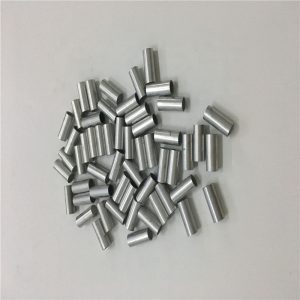
 Lue LisääPikakatselu
Lue LisääPikakatseluErittäin tarkat alumiiniputket
Alumiiniputkilla on korkea säänkestävyys, naarmuuntumisenesto, korroosionestoaine ja hyvä säänkestävyys, hienovaraiset reunat ja tyylikäs ulkonäkö sekä helppo käsittely ja asennus, korkea kirkkaus ja kovuus. Joten sitä käytetään laajalti alumiini-ikkunassa, ovi, verho seinä, Käsijohde, normaali alumiiniprofiili, koristeellinen ja teollinen alumiiniprofiili jne.
Jos sinulla on kysyttävää,olet enemmän kuin tervetullut ottamaan yhteyttäsales@grandsteeltube.com
-
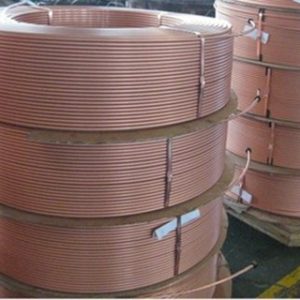
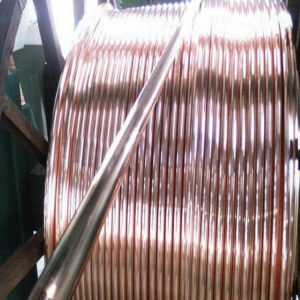 Lue LisääPikakatselu
Lue LisääPikakatseluIlmastointilaitteen kupariputket
Kupariputket on helppo asentaa, edullinen kuljettaa ja pitkä käyttöikä ja vähän huoltoa vaativa. Koska ne ovat yhteensopivia monien nesteiden kanssa ja kestävät monenlaisia ympäristöolosuhteita, Kuparista valmistetut putket tarjoavat pitkäaikaisen suorituskyvyn, joka on erittäin kustannustehokasta pitkiä aikoja. Ne muodostavat putkijärjestelmiä sekä maan päällä että alla, Pakkasissa sekä korkean lämmön sovelluksissa. Palosprinklerijärjestelmät, kryogeeniset kasvit, ilmastointi- ja jäähdytysjärjestelmät, Sairaalan happijärjestelmät, Kaasu- ja höyrylämmitysjärjestelmät sekä tyhjennys-/tuuletusjärjestelmät käyttävät kupariputkia putkina. Ne vievät myös vähemmän tilaa kuin muut metalliputket.

